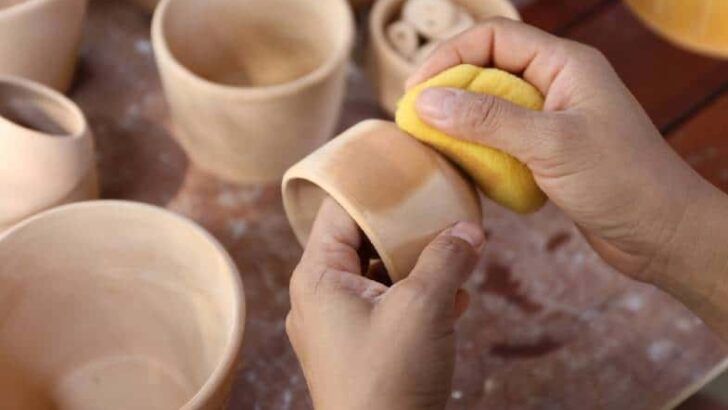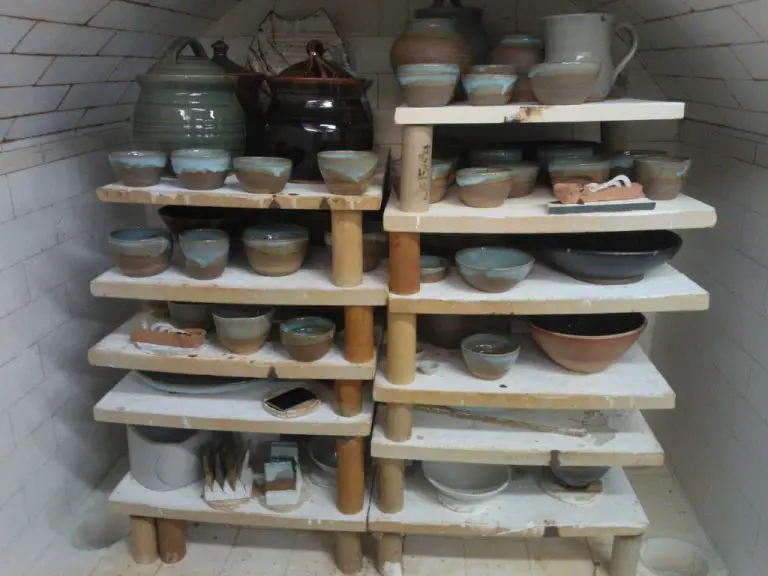What Is A Quart Size Container?
Intro to Quart Size Containers
A quart size container typically refers to a container with a volume of around 32 ounces or 946 milliliters. Quart size is a common standard container size used for food storage and organization. Quart size containers are usually square or rectangular in shape and made of plastic, glass, or other materials.
Quart size containers are one of the most versatile and useful sizes for food storage and leftovers. Their 32 ounce capacity is perfect for storing larger amounts of foods like casseroles, grains, pasta salads, soups, stews, and more. Quart size containers can be used to meal prep lunch and dinner portions. They are also handy for taking dips, beans, grains, and other sides to parties and potlucks. Overall, the quart size strikes a great balance between being large enough to hold hearty portions, while still being fairly portable and stackable for organization.
Typical Dimensions
A standard quart size container typically holds around 32 ounces (946 ml) of volume. The dimensions depend on the shape, but generally quart containers are around 5-6 inches wide and 5-7 inches tall.
For example, a common circular quart container measures around 5.5 inches in diameter and 5.5 inches tall, with a 32 ounce capacity [1]. Rectangular quart containers are often around 6 inches wide, 6 inches long, and 5 inches tall.
Quart size is between a pint container and a half gallon container. A pint is 16 ounces, while a half gallon is 64 ounces. In terms of dimensions, pint containers are shorter while half gallon containers are taller and wider than quart containers.
Volume and Capacity
A quart is equivalent to 32 fluid ounces or 0.946 liters (1 quart = 32 fl oz = 0.946 liters). This means that one quart container holds 32 fluid ounces or just under 1 liter in volume and liquid capacity.
To compare, a pint container holds 16 fluid ounces, so a quart is twice the volume of a pint. A gallon container holds 128 fluid ounces, so a quart is one fourth the size of a gallon. In metric units, a quart is very close to 1 liter in capacity. However, a liter is actually 1.0567 quarts.
Some other common container sizes for context:
- A cup holds 8 fluid ounces
- A half gallon holds 64 fluid ounces
- A 2-liter bottle holds approximately 2.11 quarts
So a quart container is a medium-sized vessel, bigger than a cup or pint but smaller than a half gallon or gallon. It’s a convenient size for many everyday uses from drinking milk to storing leftovers.
Common Materials
Quart size containers are made from a variety of materials including plastic, glass, and metal. Each material has its own advantages and disadvantages.
Plastic is the most common material used for quart size containers. Plastic options include polyethylene and polypropylene. Plastic is lightweight, inexpensive, and easily molded into different shapes and sizes. However, it can warp or melt at high temperatures and is not as durable as other materials. Some plastics may also leach chemicals into food over time.
Glass is another option, providing a nonporous surface that does not retain food odors or stains. Glass is safe for oven and microwave use. However, it is much heavier than plastic and can shatter if dropped. This makes glass less ideal for portable quart size containers.
Metal containers like stainless steel or aluminum are very durable options that conduct heat well, making them oven and stovetop safe. They are heavier than plastic but do not shatter like glass. Metal can react to acidic foods over time. Uncoated metal may also impart a metallic taste.
Popular Brands
Some major brands that produce quart size containers and food storage products include:
Ziploc
Ziploc is one of the most popular plastic container brands. They make quart size freezer and storage bags, Smart Snap containers, and Twist ‘n Loc containers in the quart size. You can find Ziploc products in most grocery stores and retailers like Walmart and Target.

Glad
Glad manufactures plastic food storage containers and bags in various sizes, including quart size. Their OdorShield pantry containers and freezer bags are a comparable option to Ziploc. Glad products are available at many supermarkets and online retailers.

Rubbermaid
Rubbermaid makes plastic food containers in different configurations, including Easy Find Lids containers and Pitchers in the 32oz/quart volume size. Their products emphasize leak-proof lids and durability. Find them in the storage aisle at stores like Target and Walmart.

Use Cases
Quart size containers have many common uses due to their convenient size:
Food Storage – Quart size zipper bags or containers are very useful for storing leftovers, meal prepping ingredients, packing snacks and lunches, and freezing individual portions of soups or casseroles. Their leakproof design makes them ideal for sauces, juices, or messy foods.
Liquids – The TSA allows you to bring up to 3.4 ounces or 100 ml of liquid in your carry-on bag, with all containers fitting in a quart size zipper bag. This is perfect for travel-size toiletries like shampoo, sunscreen, and cosmetics. You can fill the quart bag with a combination of different allowed liquids.
Cosmetics – Many beauty and hygiene products like shampoos, lotions, and creams come in 12-16 ounce containers that fit nicely into a quart size zipper bag. This keeps all your items organized in your luggage. Quart bags are also handy for packing full size cosmetics in your carry-on.
First Aid – Quart size zipper bags or hard cases work well for organizing a compact first aid kit. You can pack bandages, medications, antiseptic wipes, thermometer, etc. in a quart container to keep in your car, bag, or home.
Toiletries – Toothbrush, toothpaste, dental floss, and other small toiletries can be packed neatly in a quart size toiletry bag or hard case.
Overall, the quart size is extremely versatile for packing foods, liquids, cosmetics, first aid, toiletries, and miscellaneous small items. The zipper bag or hard case keeps everything contained while saving space.
Freezer Safe?
Most quart containers are freezable and can safely go in the freezer. However, there are some important tips to follow when freezing items in quart containers:
– Make sure the container is rated food-safe and BPA-free. Avoid containers made of cheap thin plastic, which can become brittle and crack in the freezer. Opt for thicker, high quality plastic containers designed for the freezer.
– Leave at least 1/2 inch of headspace at the top of the container before freezing. Liquids expand as they freeze, so you need room for expansion. Too little headspace can cause the container to crack or leak.
– Avoid freezing milk, yogurt, custards, and other dairy products in quart containers, as dairy tends to expand more than water-based liquids. Use smaller containers for dairy.
– Let hot foods cool completely before freezing. Putting very hot items straight into the freezer can cause cracks or warping.
– Seal the quart container tightly before freezing. Use airtight lids to prevent freezer burn.
– Label the container with the contents and freeze date before putting in the freezer. This avoids mystery items down the road.
Follow these tips, and quart containers can safely freeze soups, stocks, sauces, breads, cooked grains, and more. Just make sure to leave headspace and use quality containers!
Microwave Safe?
Most quart size plastic containers should be microwave safe and can be heated in the microwave with some precautions. According to sources like RealSimple.com, it’s recommended to follow microwave heating instructions provided by the container manufacturer to ensure safe use. Always remove the lid before microwaving, as this can trap steam and cause the container to warp or melt. It’s also important not to microwave plastic containers when they are empty, as this can more easily cause them to melt or warp.
While microwaving, it’s best to use lower power settings and heat food in short intervals to prevent overheating the container. Rotate or stir the food at least once during cooking to distribute the heat. Only use plastic containers labeled ‘Microwave Safe’ and avoid microwaving materials like styrofoam or soft plastics. According to a Reddit thread on /r/Chefit, most deli containers are technically microwave safe but can be compromised after repeated heating. Double check for any signs of damage before each use and avoid putting very hot liquids or foods into containers right out of the microwave.
To be extra cautious, transfer food into microwave-safe ceramic or glassware for heating. But when following the proper safety guidelines, most standard quart size plastic containers should withstand short periods in the microwave without leaching chemicals or posing other safety risks.
Recyclable?
Quart containers are often made from plastic, which can be recyclable depending on the type of plastic used. The most common plastic used for quart containers is polypropylene (PP), which is labeled with the recycling number 5. Polypropylene is accepted by most curbside recycling programs.
Some tips for recycling quart containers:
- Look for the recycling symbol and number on the bottom of the container. #1 (PETE), #2 (HDPE), and #5 (PP) plastics are commonly recycled.
- Make sure containers are completely empty and rinse out any food residue before recycling.
- Check with your local recycling program to confirm what types of plastics they accept.
- Remove any lids and recycle separately if made from a different material.
If a quart container has no recycling symbol or is made from black plastic, it likely cannot be recycled curbside. These may need to go in the regular trash.
Comparable Sizes
Some other common container sizes comparable to a quart include:
- Pint (Source) – A pint is half the size of a quart at 16 oz. Pints are a good option for smaller portions or when you need a container just a bit smaller than a quart.
- Half Gallon (Source) – A half gallon is twice the size of a quart at 64 oz. Half gallons are useful for larger portions or when you need more capacity than a quart.
- Liter – A liter is just slightly larger than a quart at 33.8 oz. Liters are a good option if you prefer metric container sizes over US customary sizes.


